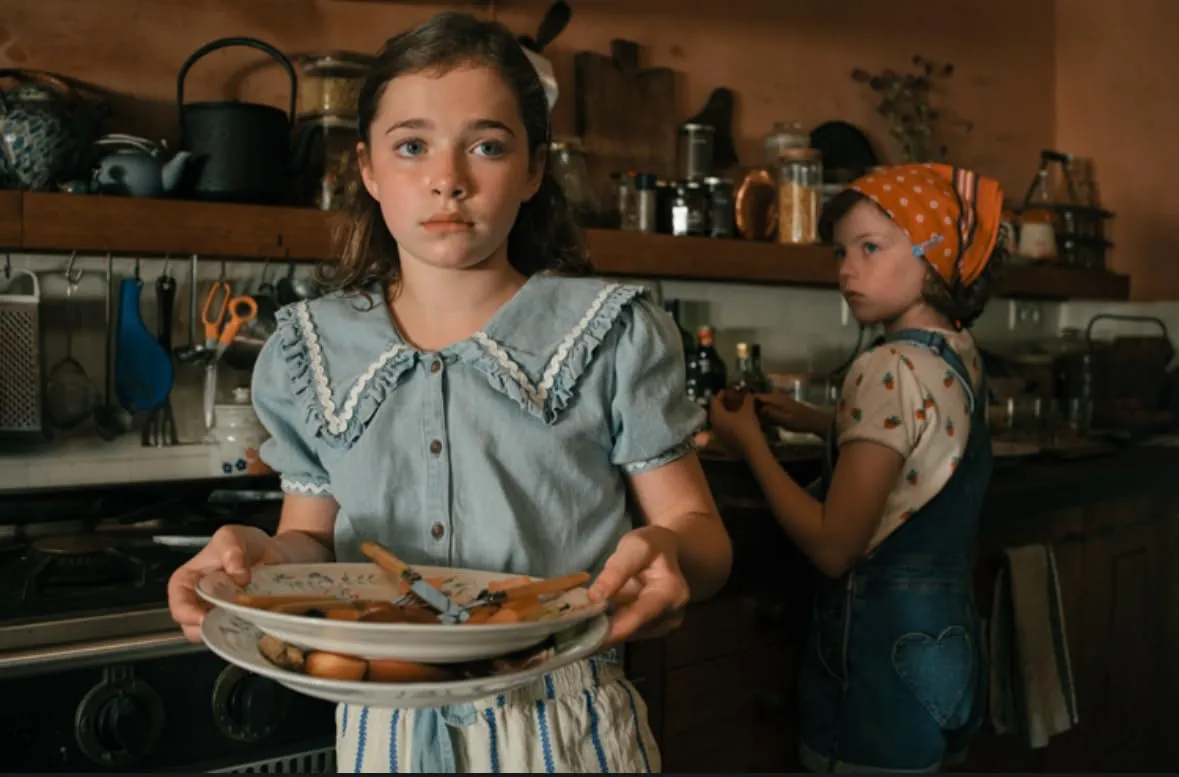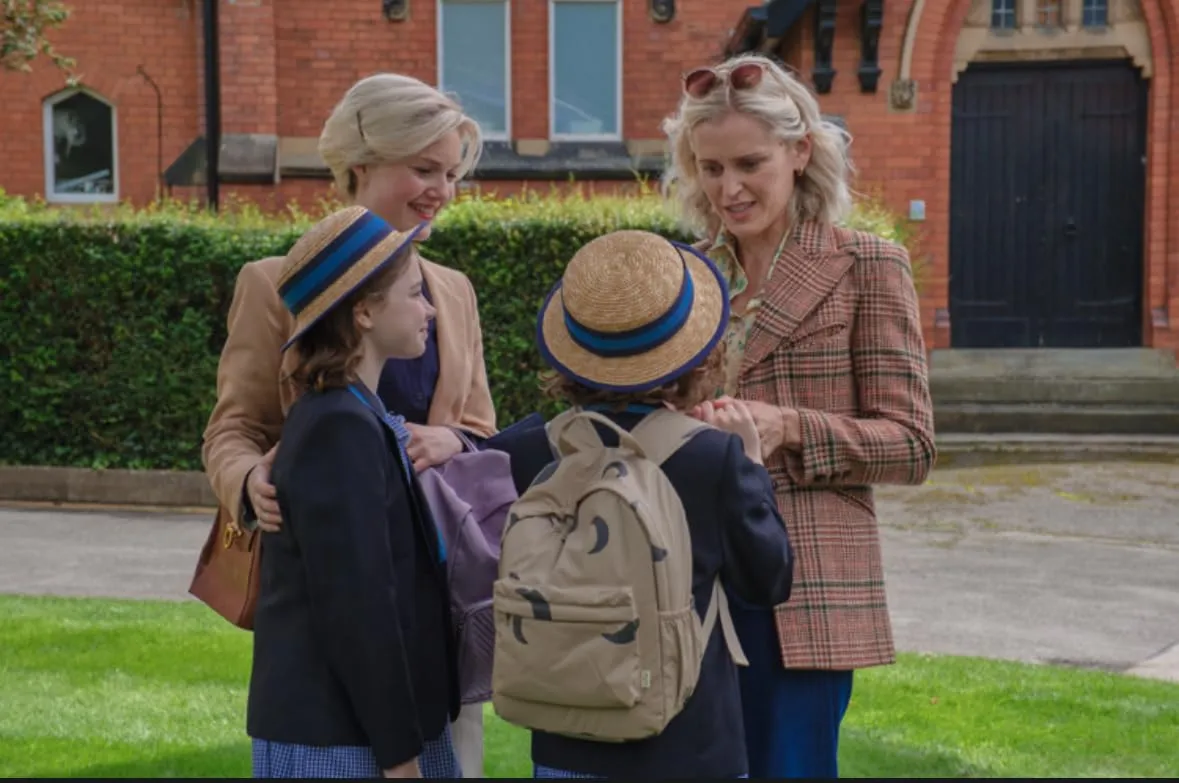In a narrative that swiftly turns an everyday family routine into a nerve-wracking mystery, the series opens with a simple overnight playdate that shatters all expectations. A child vanishes during what should have been a harmless sleepover, throwing a seemingly stable household into disarray. The plot unfolds around Elisa, a resolute mother whose unyielding search for her daughter, Lucia, exposes a concealed network of secrets and hidden agendas.
Her partner, Fred, is caught in a web of personal deceptions that complicate the crisis, while the elusive Rebecca, with her ambiguous motives, casts a shadow over the events that follow. An investigative journalist named Selma adds further layers to the narrative with her probing inquiries.
The mood is marked by palpable tension and a continuous sense of impending peril, mixed with moments of dark humor that lighten the gravity at unexpected intervals. The setting shifts seamlessly from the familiarity of a suburban home to more extravagant and unsettling international locales, reflecting a global dialogue in cinematic storytelling. This series connects with a worldwide audience by echoing a characteristic style seen in several notable film traditions, where intense personal drama meets expansive visual storytelling.
Plot Dynamics and Narrative Craftsmanship
The narrative takes a seemingly ordinary family event and transforms it into an unrelenting quest that spans continents. The story begins with a harmless overnight playdate that rapidly escalates into a far-reaching search, igniting personal betrayals, hidden motivations, and startling surprises.
A child’s disappearance sets all forces in motion, creating a ripple effect that exposes deeply personal secrets and covert conflicts among family members. This unfolding enigma reminds one of the inventive storytelling often found in parallel Indian cinema, where seemingly simple premises evolve into intricate explorations of human fragility and societal undercurrents.
The series propels viewers along a fast-moving track that maintains a heightened sense of tension at every turn. Swift episodic reveals and abrupt cliffhangers keep the suspense sustained, encouraging audiences to engage with every twist. The episodes are structured with a mix of linear progression and abrupt departures from chronological order.
Flashbacks serve as a crucial tool here, revealing concealed histories of key figures and casting light on long-kept motivations. Such narrative shifts encourage a more layered understanding of characters, echoing techniques found in both Bollywood thrillers and art-house experiments in world cinema.
Secondary storylines enrich this main pursuit. Side narratives—ranging from a father’s concealed misdeeds to a frenzied media response and an independent investigation—merge to form a multifaceted portrayal of crisis and accountability. Recurring visual symbols, such as a distinct physical mark and symbolic set pieces, recur throughout the episodes, binding disparate clues into a coherent narrative force. The meticulous editing and precise musical choices further reinforce the suspenseful mood, a hallmark of refined cinematic work that bridges cultural storytelling traditions across global platforms.
Faces of Mystery and Pain
Elisa stands at the center of the emotional storm. Starting as a tender parent who cares deeply, she transforms into a figure driven by a relentless search amid chaos. Her portrayal captures a spectrum of feelings; moments of fragility turn into unwavering determination in the face of harrowing circumstances. This evolution reflects techniques seen in some of Indian parallel cinema, where internal conflict is rendered with subtlety and intensity.
Fred exhibits a nuanced portrait marked by contradictions. His character reveals hidden chapters that complicate his role in the family’s ordeal. A once supportive partner now finds himself ensnared in personal secrets, which gradually color his interactions and add depth to the unfolding crisis. The tension in his performance is reminiscent of the layered character studies often seen in classic Bollywood dramas, where the personal and the professional collide on screen.
Lucia, though primarily a catalyst for the unfolding events, carries a quiet significance in her visual presence. Her brief appearances carry symbolic meaning; small yet potent details hint at mysteries that underpin the overall narrative. The character becomes a silent marker of the darker undertones running through the series.
Rebecca brings an ambiguous charm that keeps viewers guessing. Initially exuding warmth and reassurance, her subtle shifts in behavior raise questions about her underlying intentions. This dual aspect of her personality creates an engaging counterpoint to Elisa’s stark determination, stirring a palpable tension on screen.
Selma contributes with a piercing focus that cuts through the fog of uncertainties. Her investigative methods and energetic portrayal serve as a catalyst for revealing hidden aspects of the crisis, adding a journalistic perspective that enhances the emotional texture of the story.
The interactions between these characters, particularly the charged exchanges between Elisa and Rebecca, create moments that are both delicate and forceful. Their chemistry brings forth powerful instances of confrontation and silent acknowledgment, reinforcing the series’ rich character dynamics.
Shadows of Doubt: Symbols of Fear and Deception
The series positions the fear of parental loss as a central pillar, where the terror of a missing child ignites deep emotional scars. The narrative uses this primal dread to shape relationships and reveal hidden fractures within the family. Elisa’s desperate vigil and the painful fissures in her relationship with Fred reflect traditions seen in Indian parallel cinema, where human vulnerability and intimate conflict are portrayed in quiet yet piercing ways.
The characters appear in layers that challenge any simple classification. Each figure carries a secret that obscures their true role in the unfolding crisis. This collection of morally ambiguous individuals makes viewers question what is real and what is concealed under attractive veneers. Instances of misleading appearances, such as Rebecca’s shifting persona from approachable to cryptic, highlight the tension between what is visible and what lies beneath.
Media and journalism serve as a double-edged sword in the series. Selma’s determined reporting injects skepticism into the public narrative while exposing the manipulation that can occur during personal tragedies. Her efforts underscore the power dynamics at play when information is filtered through sensational lenses.
Attention is also drawn to recurring visual markers, including a notable birthmark and carefully arranged set pieces, which the series employs as keys to unlock plot twists. Such details echo visual storytelling techniques often celebrated in global cinema. The show also raises thoughtful questions regarding modern social practices, touching on technology’s role and the personal cost of public spectacle without compromising its earnest pursuit of cultural authenticity.
Visual Precision and Sensory Impact
The series presents a refined visual narrative through masterful camera work and thoughtful lighting. Camera angles and shot compositions capture the tension in every scene. The interplay between shadows and light creates contrast that supports the darker themes present throughout the episodes. Directors use natural contrasts and expressive compositions to enhance both intimate moments and high-stakes drama.
Set design plays a significant role in the storytelling. Comfortable, refined domestic scenes shift to eerie, deserted spaces with a single stroke of brilliance. An upper-middle-class home transforms into a space that feels hollow and unsettling, emphasizing the disruption of normalcy. Scenic international locations, especially moody, sunlit landscapes in Southern France, add depth to the emotional stakes. These settings not only provide visual variety but also serve as silent narrators in the story, each location carrying its own narrative weight.
The soundtrack and sound design further the immersive experience. Subtle sound cues paired with moments of hushed tension support emotional shifts during dramatic twists, while louder sequences punctuate critical plot developments. Music choices are carefully curated to mirror emotional tones, aligning with visual moods without overwhelming the narrative.
Editing choices contribute significantly to the feel of urgency. Quick cuts and seamless transitions shape the pace, keeping the audience alert and engaged. Special visual effects underscore dramatic peaks, hinting at hidden layers of meaning and inviting viewers to look deeper into the visual details. This technical craftsmanship in all aspects of production creates a sensory experience that enriches the viewing experience while amplifying the thematic elements presented on screen.
A Rhythm of Tension and Emotion
The directors display a clear vision through measured framing and deliberate scene construction. A sequence showing Elisa in a quiet, deserted corridor stands out; the controlled movement of the camera and low-key lighting inject a feeling of isolation that deepens the mystery. This precise visual language recalls techniques seen in some acclaimed Indian parallel films, where subtlety in composition marries emotional intensity with suspense.
Scene transitions use swift, deliberate cuts that shift pace without sacrificing character depth. Moments of rapid movement and shorter shots spike tension before easing into reflective pauses that give space for deeper character expression. One memorable moment occurs during a sudden confrontation in a seemingly secure home—the quick switch from wide, establishing views to tight close-ups captures both the urgency of the crisis and the private anguish of those involved.
The work of the editors complements the director’s choices well, ensuring that shifts in the mood feel both unexpected and naturally tied to the unfolding personal conflicts. Each sequence is crafted to evoke feelings that range from nervous anticipation to stirring empathy, leaving an enduring impression on viewers. The blend of methodical vision and vivid emotional cues keeps the audience riveted throughout the series.
Full Credits
Director: Eva Husson
Writer: Catherine Moulton
Producers and Executive Producers: James Dean, Tanya Seghatchian, John Woodward, Nicola Shindler, Alex Dahl, Johanna Deveraux, Eva Husson, Catherine Moulton
Cast: Holliday Grainger, Ambika Mod, Denise Gough, Jim Sturgess, Bronagh Waugh, Michael Workeye, Beatrice Cohen, Robyn Betteridge
The Review
The Stolen Girl
The series mixes tight storytelling, balanced pacing, and authentic production to present a blend of familial drama and international intrigue. Its exploration of personal conflict and mystery, enhanced by powerful acting and thoughtful direction, produces a lasting viewing experience.
PROS
- Impressive performances with deep emotional portrayals
- Visually striking cinematography and effective lighting
- Strong narrative pace with engaging twists
- Intricate character dynamics and authentic family conflict
- Well-chosen international settings that add dramatic depth
CONS
- Occasional narrative shortcuts may leave some questions open
- Overlapping subplots can dilute central tensions
- Complex structure may challenge some viewers' focus




















































